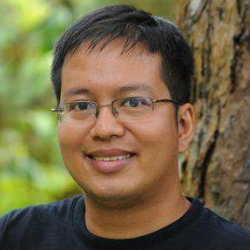Filtered By: Scitech
SciTech
Pacific Rim and the case for Pinoy giant robots
By TJ Dimacali, GMA News

Guillermo del Torro's Pacific Rim does what few big movies in recent memory have done: it entices us to dream big about our own future.
As any good story should, it serves as a metaphor for even bigger things, an echo of real-world concerns and hopes.
After all, the movie takes its title and basic premise from the idea of perpetual struggle against seemingly unstoppable forces from the Pacific Ocean out to wreak havoc on surrounding countries.
Real-life verisimilitude
The movie calls them "kaiju" (Japanese for "monsters"), but we know them in the real world as "natural disasters"—earthquakes, tsunamis, storms.
The verisimilitude is more than coincidental, as the movie's lead character, Raleigh Beckett (Charlie Hunnam), puts it right from the beginning:
"Kaijus are like storms. When a storm comes toward you, you move out of the way. But in a Jaeger (German for 'hunter', one of the movie's giant robots), you can fight the storm. And you can beat it."
It's a struggle that resonates deeply with the countries of the Pacific Rim, most of which are well-represented in the movie.
Philippines: A major battleground
And as Pacific Rim countries go, the Philippines is one of the most prone to get hit by kaiju as much as by natural disasters.
It's no wonder then that the country, though shown only in passing, is mentioned more than once as a major battleground in the fight against the kaiju.
(A little nitpicking here: geographically speaking, with kaiju as well as with storms, Eastern provinces facing the Pacific like Samar and Leyte are more likely to be hit first than Manila—but that's another story.)
As a Filipino viewer, I wondered throughout the movie why there was no mention of any effort on our part to stave off the giant attacks on our own.
In an eerie echoing of real-world history, the fictional Philippines was dependent on Jaegers from developed countries for protection—not unlike the way we were dependent on Allied weapons in World War II.
Which is somewhat ironic, considering that the "Super Robo" and "Kaiju" show genres on which Pacific Rim is based were, in fact, byproducts of that same war.
Giant robots and World War II
In a behind-the-scenes featurette, Guillermo del Torro says that he was influenced by the giant robot anime he saw as a kid, notably Tetsujin 28-go.
But this anime had its origins in post-World War II Japan, at a time when that country was struggling to re-build itself as a nation.
Tetsujin 28-go was one of the first in a long line of anime that became part of the Japanese zeitgeist and helped pave the way for them to become the technological superpower that they are today.
If nothing else, giant robo anime fostered a fascination with science and technology, encouraging kids to hope that they could one day build giant robots of their own.
And when those kids grew up, their fascination stayed with them even as they pursued successful careers in engineering and the sciences.
(Not all of them abandoned the dream of giant robots, though: at least one enterprising anime fan was able to make a real-life mech of his own.)
No Pinoy robot?
So where's the Philippine Jaeger mech?
After all, giant robots have long been a big part of our own collective consciousness too, from Votes V and Shaider's Vavilos to Mazinger Z and the Transformers.
It's a question that, strangely enough, people have not even bothered to ask.
Instead, Pinoys have been mostly fixated by Pacific Rim's imagery of an excrement-covered Manila, complaining why the city was portrayed in a less-than-spotless manner.
But one might well wonder why our collective instinct isn't to build a robot of our own to keep monsters from taking a dump on us in the first place.
It may have something to do with our culture as a whole, and our collective world view.
As Filipino fictionist Dominique Cimafranca puts it, "Our (Filipino) values are inward-looking, (emphasizing) accommodation and cooperation instead of confrontation and conquest (as in traditional Western science fiction)."
But he points out the need for Filipinos to "reclaim and re-shape the future" through science fiction, of which Pacific Rim can be seen as a contemporary example.
"(Filipino science fiction) is important because it allows us to imagine the future and our place in it. To imagine is to shape the future, else we be shaped by it," he says.
We live in a culture where we've become merely passive adopters of technology instead of its masters. But we can, and should, dare to forge future technologies of our own.
It may have something to do with our culture as a whole, and our collective world view.
As Filipino fictionist Dominique Cimafranca puts it, "Our (Filipino) values are inward-looking, (emphasizing) accommodation and cooperation instead of confrontation and conquest (as in traditional Western science fiction)."
But he points out the need for Filipinos to "reclaim and re-shape the future" through science fiction, of which Pacific Rim can be seen as a contemporary example.
"(Filipino science fiction) is important because it allows us to imagine the future and our place in it. To imagine is to shape the future, else we be shaped by it," he says.
We live in a culture where we've become merely passive adopters of technology instead of its masters. But we can, and should, dare to forge future technologies of our own.
The only question is: How big do we dare to dream?
RATING: 3.5 / 5 — DVM, GMA News
More Videos
Most Popular



